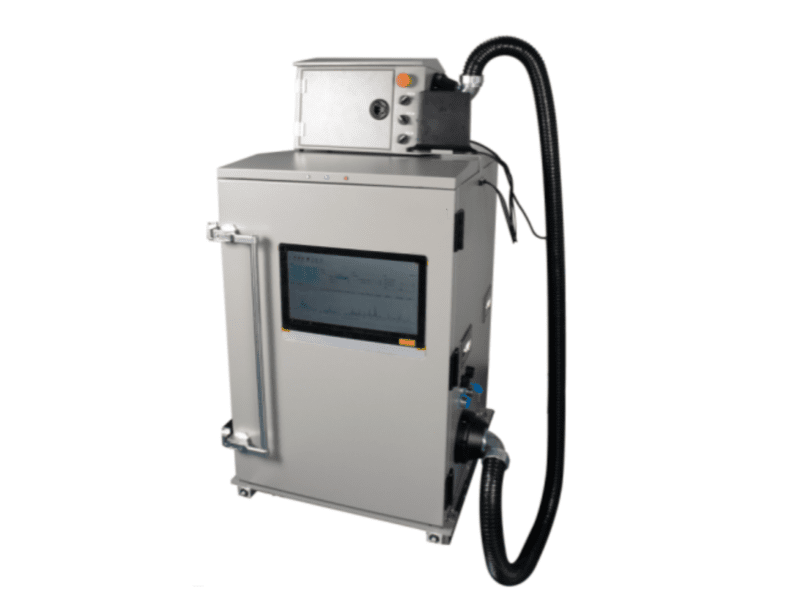LIBS online analysis system
Product Details
What is LIBS?
LIBS is short for laser-induced breakdown spectroscopy. It is an advanced technology used for qualitative and quantitative analysis of unknown sample. LIBS can simultaneously and quickly achieve multi-element analysis to determine chemical composition of materials.
How does LIBS work?
Working principle of LIBS is based on laser-induced spectral analysis of characteristic emission lines of atoms and ions. When short pulse laser beam is focused on sample surface, small amount of the mass is turned into plasma, which contains free electronics, excited atoms and ions. When falling down to ground state, atoms and ions will emit lights with distinct wavelength for each element. Spectrometer will make spectral analysis to identify elemental composition of sample.
Advantages
- Non-contact and almost non-destructive analysis.
- Simultaneous analysis for wide elemental range, including light ones like C, H, O, N, Li, B, etc.
- Fast measurement within seconds for single analysis.
- Very little or no need for sample preparation.
- No radiation.
- High accuracy and low detection limit.
Application
Due to compelling advantages, online LIBS is put into many industries to improve efficiency.
- Ore grade sorting and stockpile formation
- Dry raw mix in cement plant, iron & steel plant
- Process optimization like coal bending in power plant
- Slurry analysis in mineral processing
- Chemical analysis of liquid metal in smelting of iron, steel, aluminum, copper, etc
- Scrap metal sorting in recycling business
Handheld LIBS is featured with portable design and low weight. Mostly it is used for metal identification for stainless steel, low alloy steel, aluminum alloy, copper alloy, etc.
Case study
In this case, LIBS online system is used for sinter grade and alkalinity analysis to make adjustment in raw mix for higher capacity.
Iron ore powder is small size with bad air permeability, which would cause slipping in blast furnace. So, iron ore powders are made into sinter with big size, enough strength and porous structure. Sintering process converts fine-sized raw materials, including iron ore, coke breeze, flux, additives into an agglomerated product of suitable size for charging into the blast furnace.
Grade and alkalinity are important parameters for sinters. Grade means content of Fe. Alkalinity is the ration of CaO/SiO2. When grade changes every 1%, blast furnace fuel ratio will change 1-1.5% and capacity will change 2-2.5%. When alkalinity is every 0.1 lower than 1.85, fuel ratio increase and capacity decrease is 3.0-3.5%. By determination content of Fe, Si, Ca element, we can calculate grade and alkalinity (element Mg and Al is optional).
